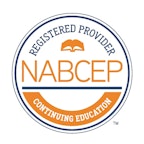Solar Executive MBA Training

About this course
The course gives you the financial modeling background and perspective often lacking in deal negotiations that will help you quickly and easily navigate the most complicated projects to find the quality projects you want to develop, own, and operate. The course is taught by two instructors: Keith Cronin, who built and sold his solar installation business to SunEdison, and Christopher Lord, a lawyer with extensive banking experience who works with solar companies to find viable projects and qualified investors.
Change the status quo in the world by becoming part of a clean energy revolution that requires a highly refined and up-to-date professional skill set.
The capstone project for this course means working a deal from start to finish. You'll take one of your own projects, or a sample project, through each step of the process during each week of the course, from development to financial modeling to dealing with investors, all with the expert guidance of the instructors.
For more information about this course please review this guide: Compare: Solar Executive MBA Training VS Financial Modeling for Solar PV Projects
Please note - You'll need a recent version of Microsoft Excel and an intermediate level of skill using the software in order to be successful in this course.
This course doesn't offer college credit toward a degree. Rather, it's an intense, targeted learning experience for professionals who need to build a very specific skill set.
Ready To Sign Up Today? Click Here to Enroll
This course is included in this bundle
Course outline
8 modules • 129 assignments • 16:28 hours of video lectures
Welcome • 5 assignments
Orientation Materials
- Set up email notifications and your student profile
- Note: Microsoft Excel
- Introduce yourself on the discussion board
- Solar Executive MBA- Overview - Keith Cronin (.pdf)
- Recordings of Past Live Meetings - Located in Optional Materials
Module 1 • 17 assignments
Development Plan and Project Model Overview
The six critical items are: site control, permitting, power offtake, project financing, interconnection, and engineering. We've discovered that these critical items are often overlooked or not properly prioritized. By not combing through this process early, many solar integrators, developers, and finance partners end up chasing too many deals, draining resources that could be put to better use.
The week's homework assignment is to create a project development plan for a sample scenario, including as many relevant details as possible.
- Video Lesson 1: Introduction to the Development Plan (02:33 minutes)
- Video Lesson 2: Site Control (06:46 minutes)
- Video Lesson 3: Permitting (06:48 minutes)
- Video Lesson 4: Offtake (04:52 minutes)
- Video Lesson 5: Finance (09:32 minutes)
- Video Lesson 6: Interconnection (03:20 minutes)
- Video Lesson 7: Engineering (04:18 minutes)
- Video Lesson 8: Construction (05:25 minutes)
- Homework Assignment (04:29 minutes)
- Take the quiz for this week and earn a passing score
- Download: Sample Development Plan - Excel File (.xlsx)
- Upload Your Week 1 Development Plan Homework
- Video Lesson 9: Part 1, Tour of the Solar MBA Model: Overview and Dashboard (31:00 minutes)
- Video Lesson 10: Part 2, Tour of the Solar MBA Model: Unstructured (40:46 minutes)
- Video Lesson 11: Part 3, Model Tour Partnership Flip and Customer Analysis (51:37 minutes)
- Support Material - SolarMBA v2.1 Demo Solar PV Project Model (.xlsb)
- Bibliography: Additional books and online resources (.pdf)
Module 2 • 20 assignments
Sizing a Distributed Generation System and Economic Modeling Basics
The second lesson covers economic modeling. We cover some basic commands, formulas and functions within Excel that will enable us to build a successful financial model of our proposed PV system. Once we are comfortable with these basic commands, formulas, and functions, we will graduate to our demo solar PV project model. Using this fully functional model as our guide, we will take a close look at planning and structuring a solar PV model, including some basic good housekeeping practices and organization.
We will then take an in-depth tour to see how the individual modules and worksheets come together to create a look at the unstructured economics of a project and how a partnership flip works for such a project. We will focus for a close up look at the debt module, depreciation module and calculation of internal rate of return (IRR) and net present value (NPV).
- Video Lesson 1: Introduction to Sizing Distribution System (03:54 minutes)
- Video Lesson 2: The electric bill (05:11 minutes)
- Video Lesson 3: Excel Modeling your Distributed Generation System (06:36 minutes)
- Video Lesson 4: Examining Costs for a Distributed Generation System (05:30 minutes)
- Video Lesson 5: Labor Tracking (06:09 minutes)
- Homework Week 2: Assignment 1 - Cost Modeling - Distributed Generation System (.pdf)
- Week 2- Excel File Download- Cost Modeling - Distributed Generation System (.xlsx)
- Homework Week 2: Assignment 1 - Distributed Generation PDF (.pdf)
- Week 2- Electric Bill - Download (.pdf)
- Submit Your Week 2: Assignment 1 Homework
- Video Lesson 6 - Modeling Basic Support - 11 Functions (52:27 minutes)
- Video Lesson 7 - Modeling More Advanced Material - Shortcuts, 4 Functions and 1 Tool (41:53 minutes)
- Support Material: Presentation Outline for Modeling Basics Overview (PDF) (.pdf)
- Support Material: Basic Excel Modeling Workbook (.xlsx)
- Support Material - Commands and Formulas for Solar Modeling Accompanies Video Modeling Basics (.xlsx)
- Support Material: More Advanced Excel Shortcuts, Function & Tool Workbook (.xlsx)
- Homework Week 2: Assignment 2 - PV Project Modeling Exercise (pdf) (.pdf)
- Homework Week 2: Assignment 2 - PV Project Modeling Excel Template (.xlsb)
- Homework Week 2: Upload your completed Template PV Project Model Here
- Quiz Week 2: Take the quiz for this week and earn a passing score
Module 3 • 31 assignments
Risk Management and Budgeting
As you continue to develop your understanding of how to model the project economics using your completed (or in-process) demo model, you will look at the various project incentives and subsidies available to solar projects around the country. There are four main categories: federal tax, state tax, direct incentives, and solar renewable energy certificates (SRECs). We will also familiarize ourselves with the Database of State Incentives for Renewables & Efficiency (DSIRE) and touch upon feed-in tariffs. To conclude the week, we will consider how how prospective investors value a project and the implications of their methods.
- Video Lesson 1: Solar Federal Tax Incentives - Intro & Investment Tax Credit (ITC) (22:07 minutes)
- Video Lesson 2: Solar Federal Tax Incentives - Depreciation (23:36 minutes)
- Support Material: Excel Model Depreciation Example (Video Lesson 2, Depreciation) (.xlsx)
- Video Lesson 3: Solar Federal Program - PURPA (27:05 minutes)
- Video Lesson 4: Incentives State Incentives Part 1 - State Tax Incentives (23:53 minutes)
- Video Lesson 5: Incentives State Incentives Part 2, Cash Grants, PBI & FIT (20:07 minutes)
- Video Lesson 6: Incentives State Incentives Part 3 - RPS/REC Prog. & Net Metering (36:30 minutes)
- Video Lesson 7: Incentives State Incentives Part 4 - RPS Programs, Community Solar (29:33 minutes)
- Support Material: Outline for Understanding Solar Incentives (.pdf)
- Video Lesson 8 - Valuation Video (18:12 minutes)
- Support Material: Valuation Video Outline (pdf) PDF for Valuation (.pdf)
- Video Lesson 9: Introduction to Budgeting Your Business (03:30 minutes)
- Download: Budgeting Excel File Template- Uses Macros (.xlsm)
- Video Lesson 10: Budgeting Labor (04:55 minutes)
- Video Lesson 11: Labor Productivity (05:25 minutes)
- Video Lesson 12: Overhead- Introduction (05:19 minutes)
- Video Lesson 13: Overhead- Advertising (02:32 minutes)
- Video Lesson 14: Overhead- Professional Services (02:28 minutes)
- Video Lesson 15: Overhead- Training (02:43 minutes)
- Video Lesson 16: Overhead- Summary- Allocation (02:26 minutes)
- Video Lesson 17: Overhead- Cost Summary (04:30 minutes)
- Video Lesson 18: Overhead- Minimum Labor Goals (05:23 minutes)
- Video Lesson 19: Company Breakeven (05:14 minutes)
- Video Lesson 20: Gross Margin - Company Annual Budget (08:18 minutes)
- Video Lesson 21: Consulting Commissions Sales Tool (03:14 minutes)
- Download: Consulting-Commission-Excel File Template (.xlsx)
- Homework - Budgeting PDF (.pdf)
- Video Tutorial: File Uploads (03:17 minutes)
- Submit your Week 3 homework: Click here to upload your file
- Take the quiz for this week and earn a passing score
- Full working Solar and Load Analysis Model (.xlsx)
Module 4 • 22 assignments
Request for Proposal (RFP) and Financing Strategies
- Video Lesson 1: RFP- Intro (04:24 minutes)
- RFP- Solicitation Document- Download (.pdf)
- Video Lesson 2: RFP- Overview (06:27 minutes)
- Video Lesson 3: RFP- Requirements (06:55 minutes)
- Video Lesson 4: RFP- Project Team - Qualifications (07:22 minutes)
- Video Lesson 5: RFP- System Design (06:34 minutes)
- Video Lesson 6: RFP- Minimum Requirements (05:50 minutes)
- Video Lesson 7: RFP- Award (11:47 minutes)
- Video Lesson 8: RFP- Insurance (06:02 minutes)
- RFP-Guidelines- Homework PDF File (.pdf)
- Upload RFP Response
- Video Lesson 9 - Structures: Partnership Flip Video (34:34 minutes)
- Video Lesson 10 - Structures: Sale Leaseback Video (16:32 minutes)
- Video Lesson 11 - Structures: Lease Pass-Through (Inverted Lease) Video (20:23 minutes)
- Support Material Video Lessons 9 through 11 Lecture Notes PDF for Solar PV Structures (.pdf)
- Video Lesson 12 - Risk Management: Insolation Video (25:11 minutes)
- Video Lesson 13 - Risk Management: Leverage Video (32:22 minutes)
- Support Material Lesson 13 - Leverage Example Excel Spreadsheet - Leverage Example (.xlsx)
- Video Lesson 14 - Risk Management: Credit Risk Video (10:34 minutes)
- Support Material Video Lessons 12 through 14 Lecture Notes - Risk Management (.pdf)
- Homework Week 4, Assignment 1: Continuation of Modeling, PDF with Modeling Assignment (.pdf)
- Upload Your Solar PV Model Homework Assignment
Module 5 • 20 assignments
Contract Document Explanation - Video Lessons - Why, What, How and Who Explained
This week, we will provide sample documents for your reference, walk you through the essential elements of the documents, and share anecdotes and perspectives about what they are and how you will use them.
An outgrowth of your development plan must be a resource management plan. An important part of a resource management plan is recognizing what work is best done internally versus externally. We'll spend some time discussing how to manage employees and contractors. This is a critical consideration because it's how you'll spend all of your time once you get a project approved.
- Video Lesson 1: Introduction to a LOI (05:17 minutes)
- LOI- Sample- Download (.docx)
- Video Lesson 2: Introduction to a MOU - Part 1 (07:28 minutes)
- MOU- Land Lease- Sample- Download (.docx)
- Video Lesson 3: Introduction to a MOU - Part 2 (06:43 minutes)
- Video Lesson 4: Introduction to the SEIA PPA- C&I - Part 1 (05:18 minutes)
- SEIA- PPA- C&I - Download (.pdf)
- Video Lesson 5: Introduction to the SEIA PPA- C&I - Part 2 (09:38 minutes)
- Video Lesson 6: Introduction to the SEIA PPA- C&I - Part 3 (07:17 minutes)
- Video Lesson 7: Introduction to the SEIA PPA- C&I - Part 4 (08:02 minutes)
- Video Lesson 8: Introduction to an Operations & Maintenance Agreement (09:05 minutes)
- Video Lesson 14 - Overview & SPE Video (24:28 minutes)
- Video Lesson 15 - PPA Video (44:42 minutes)
- Document - Lesson 15 - Form of PPA (.doc)
- Document - Lesson 16 - O&M Form of O&M (.doc)
- Video Lesson 17 - EPC Video (30:40 minutes)
- Document - Lesson 17 - EPC Form of EPC (.doc)
- Lecture Notes - Lessons 14-17 Lecture Notes (.pdf)
- Take the quiz for this week and earn a passing score
- NREL- Commercial- PPA- Download (.docx)
Module 6 • 6 assignments
Putting It All Together
- Video Lesson 1: Putting It All Together (05:33 minutes)
- Excel File - Download- Financial Model (.xlsb)
- Lesson - 2 - Summary Model Review (42:41 minutes)
- Video Lesson - 3 - Partnership Flip: Supplemental Material on Fine Tuning the Flip Video (17:15 minutes)
- Role of Appraisal and Cost Segregation Analysis in a Renewable Energy Project (21 minutes) (.mp3)
- Take the quiz for this week and earn a passing score
Conclusion • 8 assignments
Feedback and Additional Resources
Don't forget that you'll have access to the course materials for 12 months after the session ends. Feel free to come back as much as you like to continue learning, and please stay in touch. After your year of access expires you can optionally extend access with a HeatSpring Membership.
- Video Lesson 1: How to Write a Recruiting Ad That Attracts People (07:17 minutes)
- Video Lesson 2: How to Write a Recruiting Ad That Attracts People (07:42 minutes)
- Download: Recruiting Ad Writing Template- Word Doc (.docx)
- Private LinkedIn Solar Executive MBA Alumni Group
- 1 Year of Access to Course Materials
- Feedback: 2-minute Exit Survey
- Consider Joining as a HeatSpring Member
- Certificate of Completion: Request a Certificate
Continuing Education Units
Approved for the following CEUs
- NABCEP Advanced Credit Hours
- NABCEP JTA
- NABCEP RE Elective
- NABCEP PV Associate Renewal
Approved NABCEP CEU Hours
| NABCEP Credential | Advanced Hours for Exam | Recertification CEU Hours | NEC | JTA | RE Elective | Building or Fire Code |
|---|---|---|---|---|---|---|
| 5 | 20 | 0 | 5 | 12 | 0 | |
| 0 | 12 | 0 | 0 | 0 | 0 | |
| 0 | 20 | 5 | 12 | 0 | ||
| 0 | 20 | 0 | 5 | 12 | 0 | |
| 20 | 20 | 0 | 20 | 12 | 0 | |
| 0 | 20 | 0 | 0 | 12 | 0 |
NABCEP Registered Provider

This course counts towards the training requirements for taking NABCEP professional certification exams and CEUs for renewing all certifications.
Instructors
-
What kind of world do you want to live in? Two plus decades of cleantech experience on our journey together to sequester carbon in meaningful ways. Blessed with a multidisciplinary skill set of development, finance, business, and deep connections globally. The road to your destiny is often a curved line. After a decade on the East Coast, it catapulted me to Hawaii to... Learn more
-
Christopher J. Lord is the Managing Director of CapIron, Inc., a firm focused, among other things, on helping clients plan, structure and close financings involving renewable energy projects, including Distributed Generation and Utility-Scale Projects. Mr. Lord graduated from Cornell Law School, and practiced corporate law in firms, and in-house, for over 25 years. He... Learn more
Frequently asked questions
How does this course work?
How is this course different from Financial Modeling for Solar PV Projects?
How long do I have access to the materials?
Does this course cover utility scale solar developments?
The course covers all of the principles behind utility scale and distributed generation solar. The models scale equally between them because the principles remain constant. That said, utility scale solar prices tend to be much lower (benefiting from the larger economies of scale), but this is reflected through management of the various input variables.
The course and materials really are infinitely expandable.
Is this course relevant for international students
For the most part, we won’t cover the specific subsidies and tax treatments for countries other than the US, but the bulk of the material is readily applicable to all solar projects regardless of the country.
Is there a certificate of completion?
How does the course work, do I have to be present at specific times, what if I miss a class?
You get access to all of the content as soon as you enroll and can work ahead. After the 6-week instructor led session ends, you'll continue to have access to the full course content for a full year and can complete the course on your own and print your certificate of completion, you just won't have the instructors' guidance after the session ends.



